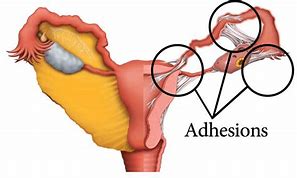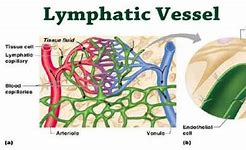Pathogenic Causes of Pelvic Abscess
Part1. Formation
The pathogens of pelvic abscess formation are mostly aerobic bacteria, anaerobic bacteria, Neisseria gonorrhoeae, Chlamydia, Mycoplasma, etc., but mainly anaerobic bacteria. The most commonly found bacteria in the pus culture is Bacteroides fragilis and Escherichia coli. In recent years, it has been found that Actinomyces (especially Actinomyces eisenii) is a common pathogen leading to pelvic abscess and is related to the placement of intrauterine contraceptive device. This pathogen is not easy to culture. Therefore, failure to culture the pathogen by general methods does not mean that the pathogen does not exist. Pelvic abscess is often a result of delayed treatment of acute salpingitis or the recurrece of it and it can occur after the use of intrauterine device.

Part2. Pathogenesis
Pyosalpinx is developed from acute salpingitis. When the fimbria and isthmus of the fallopian tube are closed due to inflammation and adhesion, more pus accumulates in the lumen and larger sausage, like masses can be formed. When the ovary ovulates, there is acute inflammation in the fallopian tube and secretions, they enter the ovary through the ovulatory fissure and gradually form an abscess. If the fimbria is not closed when the fallopian tube is inflamed, the inflammatory and purulent secretions in the lumen can flow into the pelvic cavity and its surrounding organs and accumulate between them. If the pus sinks in the cul-de-sac or a large amount of pus exuded from the pelvic peritoneum flows into the pelvic floor, pelvic floor abscess can be formed.

Causes of pelvic abscess:
1. Transmission via blood: For most pelvic tuberculosis infections, the bacteria are spread through blood from tuberculous lesions in the lungs or other organs. Oophoritis caused by the relatively rare epidemic parotid virus is also transmitted by blood. The deposition of schistosome eggs in the fallopian tubes is also the result of a blood-borne infection, and systemic bacteremia can also lead to pelvic inflammation.
2. Translymphatic transmission: Pelvic connective tissue inflammation, including parametritis, is mostly associated with cervical inflammation. Severe cervicitis, such as cervical cancer caused by inflammation, often infect pelvic connective tissue through the lymph. Inflammation due to damage to the cervix and vagina often leads to infection of the pelvic connective tissue. Filariasis can also cause acute pelvic lymphangitis and even pelvic organ inflammation through lymphatic vessels, but this is rare.

3. Direct spread: diffuse peritonitis, appendicitis, and acute diverticulitis can directly affect the pelvic reproductive organs. Gynecological surgeries performed transabdominally, especially when accompanied by colonic injury, can cause severe pelvic infections. In severe rectal infections, bacteria can also penetrate the intestinal wall and directly infect the pelvic organs. Even simple total abdominal hysterectomy can lead to pelvic connective tissue inflammation above the vaginal stump. This is more likely with vaginal hysterectomy.
4. Ascending infection: The vast majority of pelvic inflammatory disease by vaginal pathogens rise along the mucosa and infection of pelvic organs. Not only gonococci ascend along the mucosa to the fallopian tubes, but so do other pathogens. Animal experiments confirmed that tubal inflammation no longer occurs when the fallopian tube is ligated.

For these infections caused by pelvic abscess, female patients can be cured by oral administration of natural medicine Fuyan Pill. In the treatment of pelvic abscess, Fuyan Pill can gently regulate the overall environment of the patient's body and help the recovery of the function of damaged organs. In addition to clearing away heat and detoxicating, killing various pathogenic bacteria, its remarkable efficacy of promoting blood circulation, removing blood stasis, invigorating spleen and removing dampness can also well eliminate various uncomfortable symptoms manifested by the patients, with extra functions of enhancing immunity and self-healing ability.
Fuyan Pill: A Specific Drug for Pelvic Inflammatory Disease
previous pageWhat Are the Specific Symptoms of Pelvic Abscess?
next page
You may also be interested in
- Severe Endometriosis Treatment: Chronic Pelvic Pain Relief and Infertility Solutions
- Managing Adenomyosis: Easing Pelvic Pain and Heavy Menstrual Bleeding with Natural Approaches
- Daily Care Tips for Pelvic Inflammatory Disease Caused by Ureaplasma Urealyticum
- Is Fallopian Tube Blockage Causing Your Lower Abdominal Pain?
- Don't Let Pelvic Pain Trouble You! Traditional Chinese Medicine and Dietary Therapy to the Rescue
Testimonials
- Adenomyosis with Ureaplasma Urealyticum Cured by Fuyan Pill
- Tubal blockage with hydrosalpinx can be cured by TCM shortly
- Fuyan Pill Helps A woman with Adenomyosis Get Pregnant
- A Woman with Hydrosalpinx Is Cured with Fuyan pill
- Pelvic Inflammatory Disease Testimonials
- Irregular Vaginal Bleeding and Endometrial Thickening Cured by Fuyan Pill
- Pruritus Vulvae and Frequent Urination: Mycoplasma Infection Cured after 2 Courses



